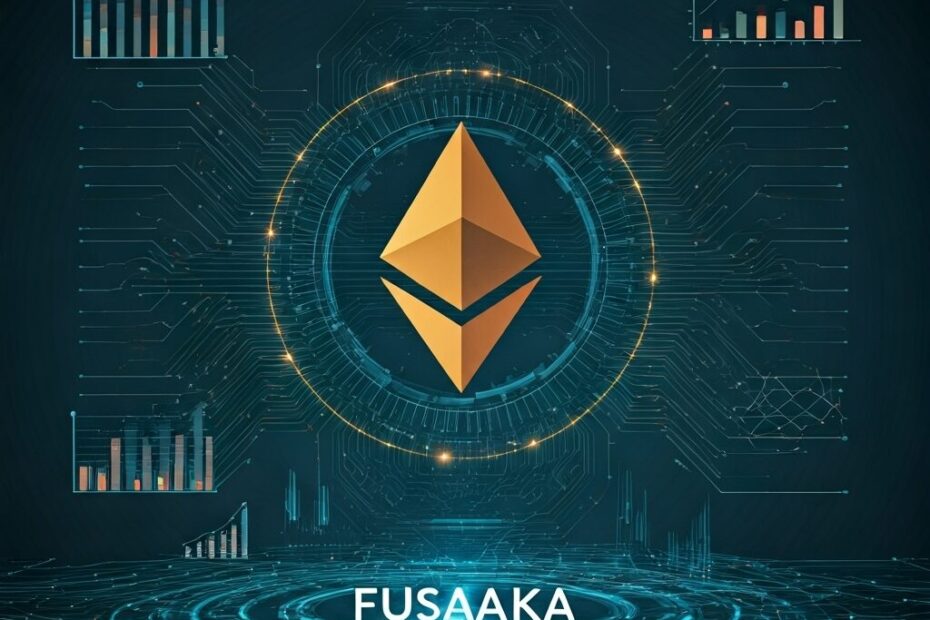Ethereum’s Fusaka Upgrade Undergoes Second Test On Sepolia Ahead Of Hoodi Network Trial
John: Hey everyone, I’m John, a tech blogger at Blockchain Bulletin, where I break down the latest in Web3, metaverse, and blockchain tech. Today, we’re diving into Ethereum’s Fusaka upgrade, which just hit its second test on the Sepolia testnet, with the Hoodi network trial coming up next—I’ll explain what this means step by step. If you’d like a simple starter guide to exchanges, take a look at this beginner-friendly overview.
Lila: That sounds exciting, John! Readers are probably wondering what’s new with Ethereum and why these tests matter—can you start with the basics?
What is the Fusaka Upgrade?
John: Sure, Lila. The Fusaka upgrade is Ethereum’s next major update, focused on improving scalability and reducing costs for users, especially institutions. It builds on previous upgrades like Dencun from 2024, introducing features to make the network more efficient.
Lila: Scalability—what does that mean exactly? And why focus on institutions?
John: Scalability means handling more transactions without slowing down or increasing fees (think of it as widening a highway to fit more cars). For institutions, like banks or large companies, it lowers the cost of verifying data on the blockchain, making Ethereum more appealing for big-scale use.
Background on Ethereum Testnets
Lila: Okay, got it. In the past, how have these upgrades been tested before going live?
John: In the past, Ethereum has used testnets like Holesky, Sepolia, and now Hoodi to trial upgrades safely. For example, the Holesky testnet successfully ran Fusaka on 2025-10-01, two weeks before Sepolia. These are like practice runs to catch bugs without affecting real money on the main network.
Lila: So Sepolia is the current one—what’s special about it?
John: Currently, Sepolia is a key testnet for developers to test applications and tools. It was launched around 2022-07-06 as a public testnet, and it’s now hosting the second Fusaka test as of 2025-10-14.
The Sepolia Test: Current Status
Lila: Walk me through what’s happening right now with this second test on Sepolia.
John: As of 2025-10-14, Ethereum developers activated Fusaka on Sepolia at around 07:36 UTC. This test follows the successful Holesky rollout and includes trials like a 60 million block gas limit and PeerDAS, which helps validators check only parts of data to save bandwidth. It’s all about stress-testing for real-world use.
Lila: PeerDAS? That’s new jargon—can you explain?
John: PeerDAS stands for Peer Data Availability Sampling—it’s a tech that lets network nodes verify data without downloading everything, reducing costs while keeping things secure (like checking a book’s summary instead of reading every page).
Key Features of Fusaka
Lila: What are the main changes this upgrade brings? Maybe list them out for clarity.
John: Absolutely, here’s a quick list of key features based on official announcements:
- PeerDAS for efficient data verification, cutting bandwidth needs for validators and Layer 2 solutions.
- Increased block gas limit to 60 million, allowing more transactions per block.
- Improvements to Layer 1 scaling and user experience, like better blob handling from past upgrades.
- Targeted cost reductions for institutional users through modular data checks.
John: These build on Ethereum’s history of upgrades, aiming for a more robust network.
Why Hoodi Network Trial Next?
Lila: So, after Sepolia, what’s the deal with Hoodi?
John: Hoodi is a newer testnet launched on 2025-03-19, designed specifically for validators and staking providers to test in a stable environment. The Fusaka trial on Hoodi is scheduled for 2025-10-28, serving as the final rehearsal before setting a mainnet date.
Lila: And mainnet means the real Ethereum network, right? Any risks here?
John: Yes, mainnet is where actual ETH transactions happen. As for risks, these tests help minimize them, but always remember compliance varies by jurisdiction—check official Ethereum docs for your area.
Why This Matters for Users
Lila: Looking ahead, how does this affect everyday users or builders?
John: Looking ahead, if all tests go well, Fusaka could hit mainnet in early December 2025, leading to lower fees and faster transactions. For builders, it means easier development of apps on Ethereum, and for users, a smoother experience with Layer 2 networks.
Lila: Any tips for someone new to this?
John: Start by following trusted sources like Ethereum’s official blog. Don’t rush into staking without research—test on Sepolia if you’re a developer (and hey, if it all works out, we might see Ethereum handling even more global traffic without a hitch).
Common Questions and Answers
Lila: Readers might have FAQs—let’s cover a couple.
John: Great idea. One common question: Will Fusaka affect my ETH holdings? No, testnets use fake ETH, so mainnet funds are safe until the official launch.
Lila: Another: How can I stay updated?
John: Follow Ethereum devs on X, like @timbeiko or @sassal0x, for real-time posts, but always verify with official sites.
John: Whew, that covers the Fusaka upgrade from its Sepolia test to the upcoming Hoodi trial—it’s a steady step toward a more efficient Ethereum. Remember, these updates show how blockchain tech keeps evolving based on real testing. And if you’d like a bit more background on exchanges, you might enjoy this global guide.
Lila: Thanks, John—this makes the tech feel approachable. Key takeaway: Ethereum’s upgrades like Fusaka are tested thoroughly to ensure a reliable future for everyone involved.
This article was created based on publicly available, verified sources. References:
- Original Source
- ETH News: Fusaka Upgrade Is Live on Sepolia Testnet
- Ethereum’s Fusaka Upgrade Tested on Sepolia, Hoodi Next
- Ethereum Sepolia Testnet Upgraded to Fusaka: Details
